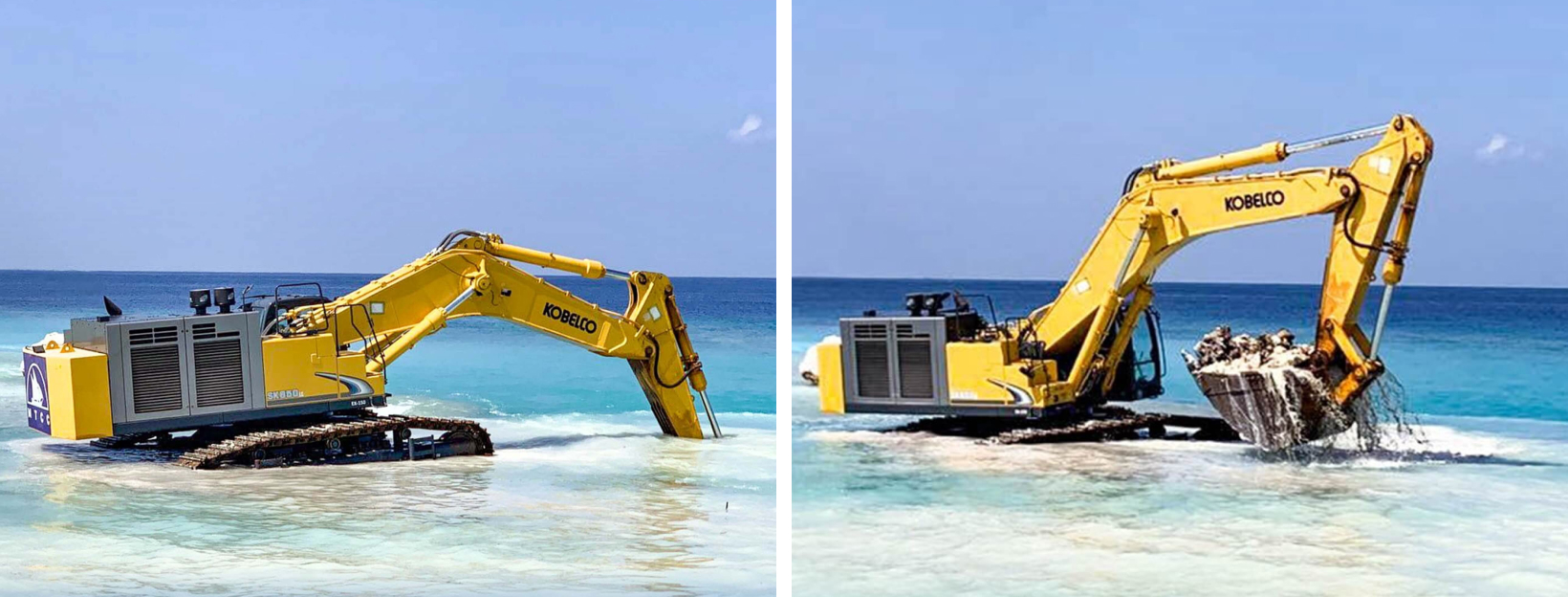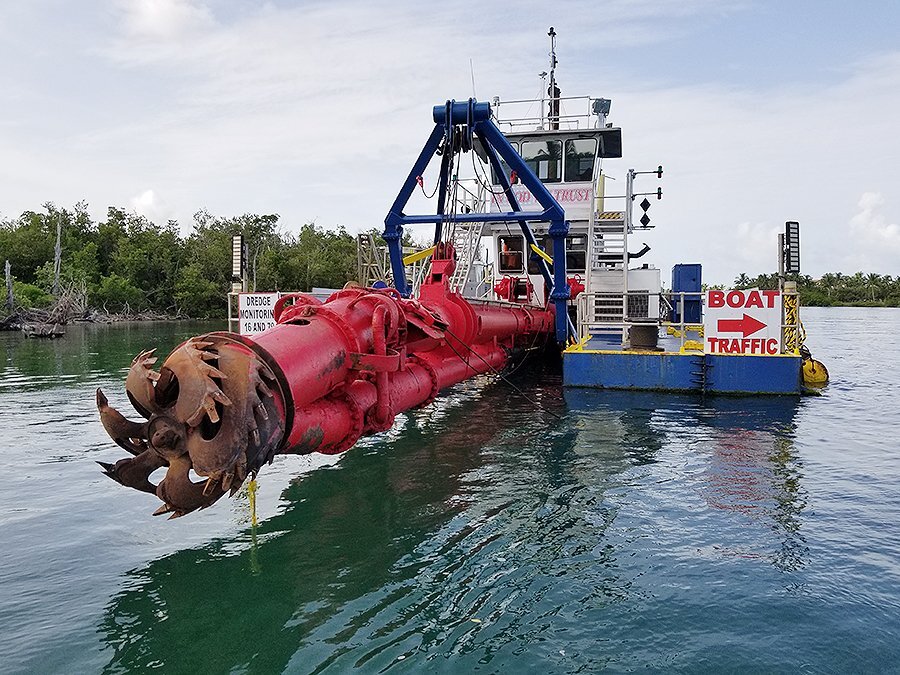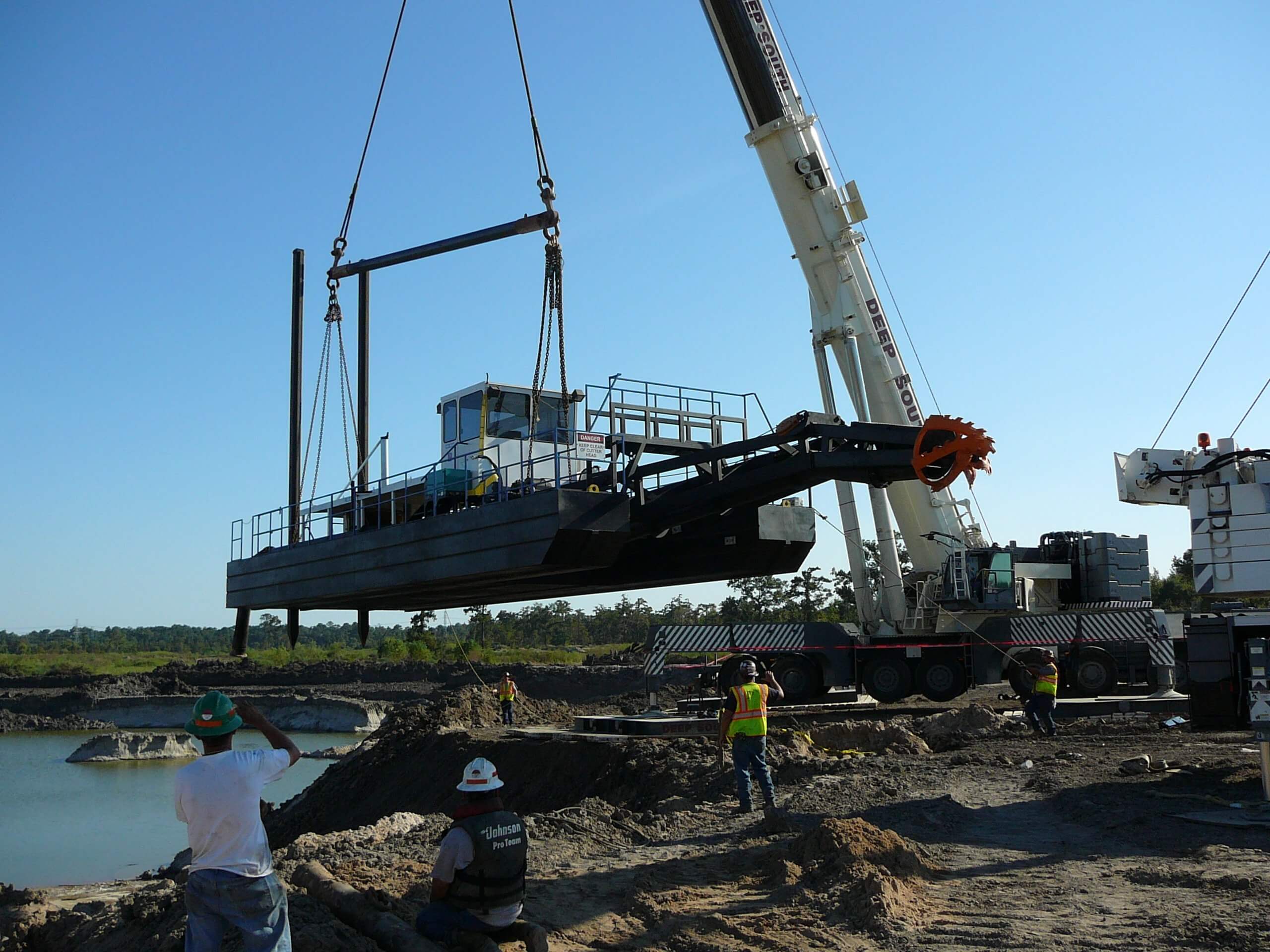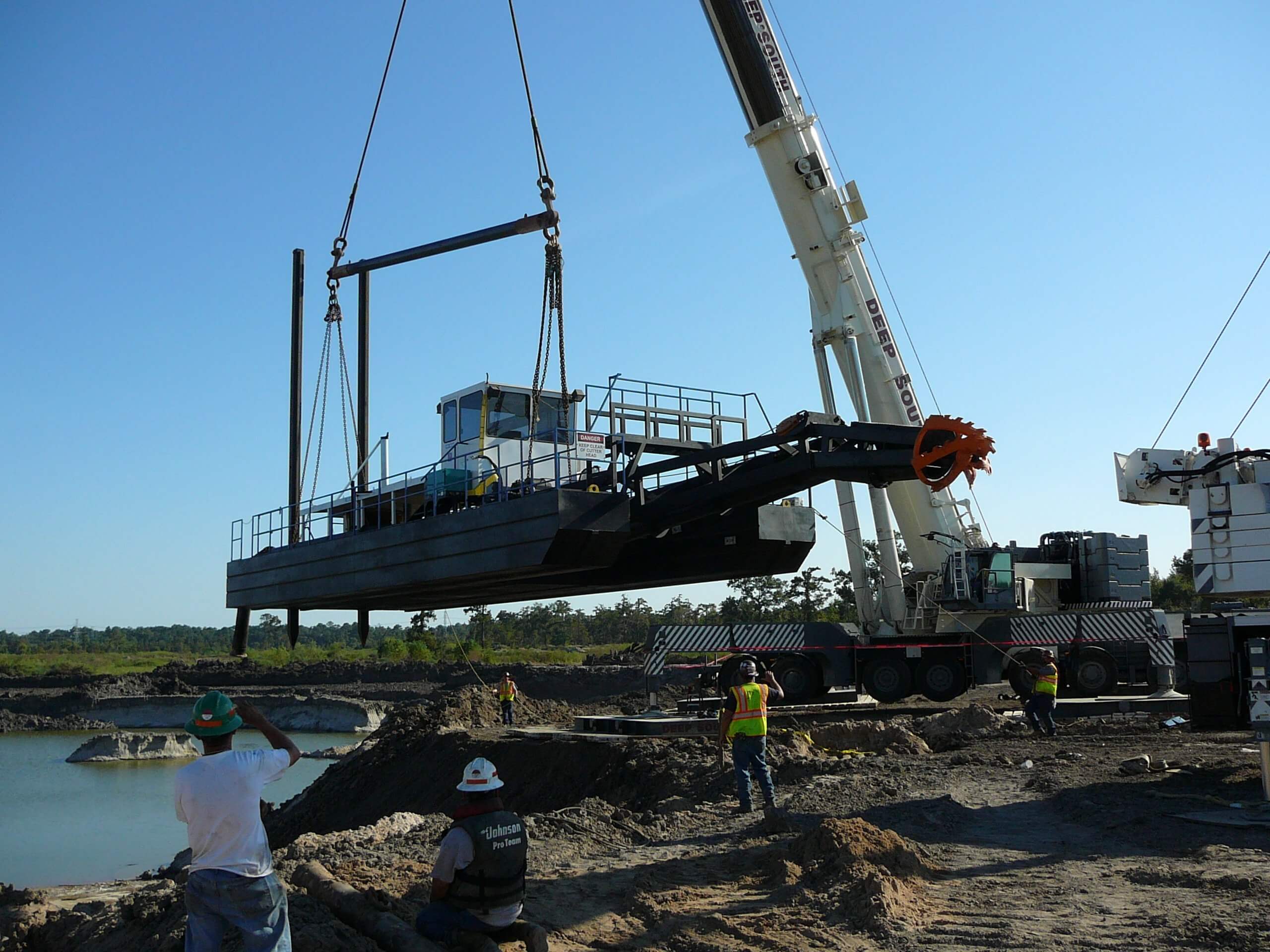The dredging business is no doubt one of the most profitable businesses today. On another note, its steady supply of sand, gravel, mud, and other bulk materials that are supplied as raw materials to the construction sector, has made it an in-demand business.
Meanwhile, starting up a dredging business can be quite challenging if the right steps are not taken. Your earnings or profit in the industry may also be affected if you miss out on some relevant info during the process of setting up the business.
In this article, you’ll be learning all you need to know to start a dredging business, how to make a fortune from it, staffing requirements etc. Do make sure you read to the end.
But before we continue, let’s delve into what dredging means.
What is Dredging?
Dredging is the excavation of gravel, mud, sand, and other materials from beneath a body of water such as a stream, lake, or lagoon, carried out with the help of a dredger vessel.

Why you should start dredging business
As the world’s population grows, so does the demand for more housing. The need to develop more facilities such as roads, bridges, drainages, real estate, and so on, is critical at all levels of government. Thus, making the dredging business one of the most sought-after enterprises of this time.
Advantages of Dredging
The following are some of the advantages and opportunities of starting a dredging business:
- Expansion Of Waterways: Waterways are known to naturally have silt deposited in them in large quantities. While most of the items we currently use are transported through waterways, vessels transporting these commodities require a particular depth to float smoothly without stirring the deposited silt with the base of the vessels. As a result, dredging becomes vital for increasing the depth of water navigation channels.
- Flood Control: With the increasing natural deposition of silt, mud, and debris in rivers, regular but controlled dredging of waterways helps to minimize the effect of heavy seasonal flooding.
- Creation Of More Navigation Channels: Dredging is also done to create more navigation channels between two or more cities for the purpose of trading and other commercial activities.

Other Money-making Opportunities in Dredging Business
Here are some of the opportunities that can be associated with dredging business:
🤑 Sand supply to different locations: Sand is a constant and an indefinite need. That is, the demand for it is always ready, and the supply is always never enough. You can seal a business contract with any construction firm around you to always supply sand for them.
🤑 Leasing of dredging tools: You can as well lease out your dredging tools to other dredging companies for a whopping sum while you smile at the bank.
🤑 Investment opportunities: In dredging business, unlike some other businesses, you can give room for external investors to partake in the business and profit will be shared at an agreed percentage.
🤑 Mining of Gold and other minerals in water bodies.
🤑 Job Opportunities: You can start up a dredging business without having a university degree in the dredging field. You can also employ people with the technical know-how in the field for the smooth running of your dredging operations.
What are the services you can offer as a dredging company?
As much as your dredging business opens career opportunities for individuals who are willing to contribute to the success of your company, there is still a limit to the service your company can offer.
The following are the list of services your dredging company can offer:
- Sand dredging.
- Lake dredging.
- River dredging.
- Marine dredging.
- Canal dredging.
- Fabrication of dredging solutions.
- Cost of starting a dredging business.
Although dredging as a business can be highly profitable, it is also capital intensive. Depending on the scale of the startup, an amount of at least, ₦250 million Naira is needed to start a dredging business if you’ll be starting on a large scale. While an amount within the range of ₦240 – 260million Naira will be enough to start on a relatively smaller scale.
What is a dredger?
While a dredge is a tool used for weeding off deposits on the sea bed, a dredger is an extensive marine vessel equipped with the dredging tool used for the excavation and scrapping of sediments deposited over a sea bed.
Types of Dredgers
Dredges and dredgers come in all shapes and sizes and here is a detailed classification of dredgers commonly used today;
1. MECHANICAL DREDGERS:
Mechanical dredgers have a typical working principle. They all have the grab or bucket tool used to load sediments, elevated and then conveyed to the suitable disposal point. The mechanical dredgers are available in a range of designs. They include:
- Grab (or Clamshell): The grab dredger picks up sediments from the seabed in a clam-like motion and discharges the contents. It is commonly used to dig up bay mud, but it’s also useful for picking up clays and loose sand.
- Backhoe: The backhoe dredgers have few restrictions when it comes to deep dredging. They are often used for coastal maintenance and shallow dredging.
- Bucket-ladder: A bucket ladder dredger is equipped with a series of buckets positioned on an unending loop that scoop material from the waterbed and deposit it into a chute to be transported to a barge.
2. HYDRAULIC DREDGERS:
The Hydraulic dredgers are distinguished by the fact that the material dredged is in suspension form and is raised through the pumping system and fed to outlet pipes.
Fine materials are easier to hold in suspension than heavy gravels, so this makes them the best for dislodging fine materials. Hydraulic dredgers come in varying forms, two of which are :
- Plain Suction Hydraulic Dredger: Typically, plain suction dredgers are used to remove sand or silt deposits from the seabed. They use a vertical suction pipe that is driven vertically into the sand deposit, sucking dredged material with or without the use of a water jet. The dredged debris is loaded directly into boats or into cans and transported to the reclamation area.
- Dustpan Hydraulic Dredger: The dustpan dredge is a hydraulic suction dredge with a wide flared dredging head and pressure water jets positioned along its length. As the dredge is winched forward into the excavation, the jets loosen and agitate the sediments, which are subsequently caught in the dustpan head.
3. MECHANICAL/HYDRAULIC DREDGERS:
These are the:
- Trailing Suction Hopper Dredgers: The trailing suction hopper dredger is a ship that has a full sailing capacity used to maintain navigable waterways, deepening the maritime canals that are threatened to become silted, to construct new land elsewhere or to replace sand eroded by storms or wave action on the beaches. A trailing suction hopper dredger is self-loading and sometimes has a pressured discharge mechanism.
- Cutter Suction Dredgers:

A Cutter Suction Dredge The cutter suction dredger uses a revolving cutter head to break up hard dirt into fragments. The material is sucked up by dredging pumps and transported to a deposit area by pipelines that span the sea and land. Split hopper barges anchored beside the cutter suction dredger transfer the soil to the deposit area to discharge it. Cutter suction dredgers are stationary dredgers when in operation. A spud is lowered into the seabed during the dredging process to secure the vessel. As a result, it remains in the same spot, but the dredger swings sideways and the cutter head cuts and removes the dirt using winches and anchors.
The VMI MD-1030 Cutter Suction Dredger (pictured below) is classified as a hydraulic/mechanical dredger & are the most common vessel in the hydraulic category. They have the ability to dredge all kinds of soils (sand, clay, rock) where the ground is too hard for trailing suction hopper dredgers.
The VMI MD 1030 Cutter Suction Dredger 1 - Bucket-wheel Dredgers: The bucket-wheel dredger has a spinning mechanical device, an excavator, situated in front of the suction head that rotates perpendicular to the ship’s axis.
4. HYDRODYNAMIC DREDGERS
- Water Injection Dredger: Water Injection Dredging (WID) is a dredging technology that removes material in an environmentally friendly manner. It is a cost-effective and environmentally friendly method of preserving the depth of shipping channels, ports, and rivers. Because of its lightness, a water injection dredger may work extremely near to embankments and quay walls.

Water Injection Dredge. Source: Dredging Today. - Ploughs, beams and rake: Ploughs, beams, and rakes are hydrodynamic dredgers that gather materials undersea and would then move it using bed slopes and natural water currents. They are dredging equipment that provides a cost-effective method by consuming only a small amount of energy, making them energy efficient.
Ploughing is frequently employed on dredging sites to smooth out inconsistencies in the seafloor. Ploughs vary in size and weight, and they are appropriate for different types of seafloor. They could be specially built beams or bottomless buckets that hold onto the bed material for a limited duration. Beams and rakes often sweep across the seabed and do not hang onto the bed material, but rather force or ‘rake’ it back into the ocean at another place.
How to choose the right type of dredger
When you’re deciding on the type of dredger to use, the type of soil you want to dredge is a key consideration. For example, dredgers intended exclusively for rock dredging are mechanical or cutterhead dredgers that have not been pre-treated, but sand can be effectively dredged by a broader range of dredgers.
Steps to starting a dredging business
Starting a dredging business requires that you take the appropriate steps. This will allow your business to thrive and operate legally without facing unnecessary challenges with any professional bodies concerned. The following are important steps to follow and also serve as a guide for you:
- Choose your business name and incorporate it with the Business Administration portal of your state or country: This is the first and most important step to take. Your refusal to do this means your business may not operate at any of the government levels. Or you may not be allowed to handle big projects. To register your business establishment, visit the Federal Business Administration portal for instructions and directions on how to do this.
- Draw your business plan and evaluate your capital.
- Get an Operating Licence from the state and federal government.
- Join the Dredgers Association in your country.
- Source for your dredging equipment (new or used).
- Build a website for your dredging company: Your website can represent your business anywhere in the world before you are contacted. Therefore, it is extremely important to build one for your dredging business. At Branditecture, we can build a world-class website for your dredging business/company. See our portfolio here.
- Create your Company Profile and Capability Statement: A company profile is a written introduction to a business that describes its activities, mission, goals, and strengths to the reader. Often, a company profile includes the story of the company’s founding and describes its products or services. In smaller enterprises, the business owner may write a company profile. Larger organisations, on the other hand, can delegate this task to a corporate design agency like Branditechture. While a capability statement is a one-page document that summarises your company’s capabilities. Consider it a resume for your business. Its goal is to deliver precise information to potential clients that will persuade them to do business with you.
- Create a strategic electronic marketing campaign: Marketing campaigns are one of the ideal ways of reaching your target clients. Through the use of social media, promoting your dredging business will do you a lot more good than when you do not. Moreover, you need to be strategic so that you do not violate the rules and regulations of the professional bodies involved.The benefits of creating a strategic marketing campaign for your dredging business are as follows:
- It will boost your business brand recognition
- Strengthens customer relationships.
- Help you assess how your customers feel about your company.
- On social media networks, you can offer customer support.
- You can create client-centred content through social media.
- You can also monitor your progress and make any adjustments to your approach.
Staffing requirements of a dredging company:
- Legal counsel: Legal counsel is an individual or organization that offers advisory services that deal with various matters, particularly legal issues involving negotiations. The title “legal counsel” is also interchangeably used with the title of “lawyer.”
- Accounting & Finance: Bookkeeper: a person whose job is to keep records of the financial affairs of a business. Bookkeepers oversee a company’s financial data and compliance by maintaining accurate books on accounts payable and receivable, payroll, and daily financial entries and reconciliations. They perform daily accounting tasks such as monthly financial reporting, general ledger entries, and record payments and adjustments.
- Accountant, Auditor: An accountant is a person who is in charge of maintaining and interpreting financial records. He must be able to pay close attention to detail, have business acumen, be computer literate, possess advanced mathematical skills, and communicate effectively.
- Project Managers: Regardless of industry, project managers are responsible for the planning, procurement, and execution of a project in any effort with a specified scope, defined start, and defined completion. Before the matter rises to higher authorities, project managers are the initial point of contact for any concerns or disagreements occurring among the leaders of several divisions inside a business.
- Engineers: Environmental, coastal, maritime engineers, Geotechnical engineers, risk assessment engineers
- Mechanics: An auto mechanic works on automobiles such as cars, vans, and light trucks, doing repairs and diagnostic testing. Some may work on huge trucks, while others will focus on off-road vehicles or parts including engines, tires, and brakes.
- Crew members: These are the; Master, First Mate, deckhands, pipe/cutter operators, mechanical, electrical and software engineers, electricians and machinists.
- Communication & Digital marketing experts
Conclusion
At all levels of government, it is widely agreed that construction projects are booming due to the constant need for them. Thus, putting the dredging business as one of the most in-demand businesses.
Just like most businesses when not planned appropriately, the tendency to get frustrated is somewhat high, hence putting the entrepreneur at risk of wasting his efforts and capital.
To run a successful dredging business, there are appropriate steps to be taken. This article has explicitly explained everything you need to know from start to finish.


